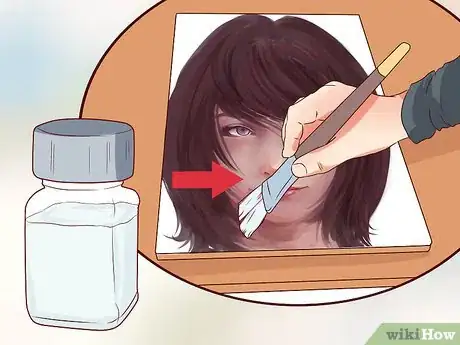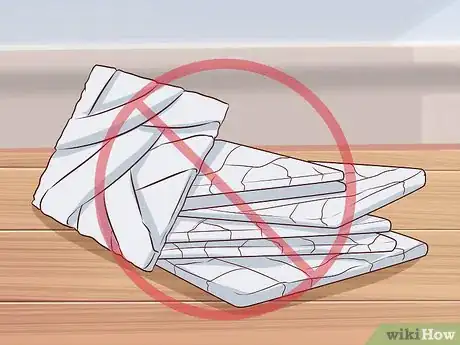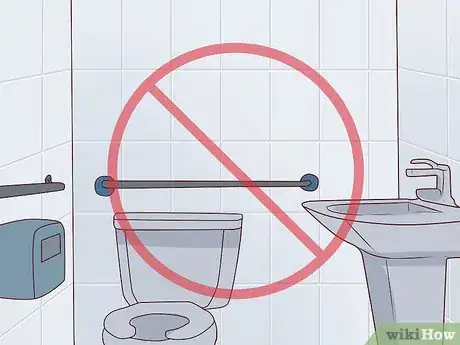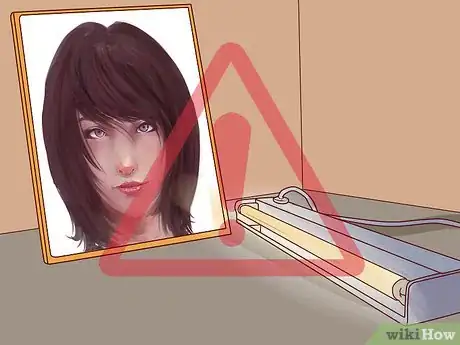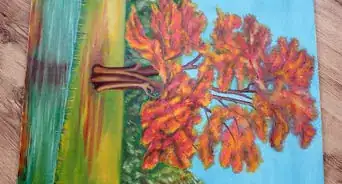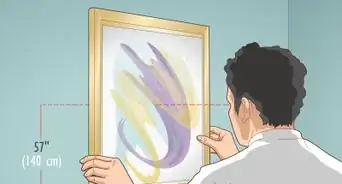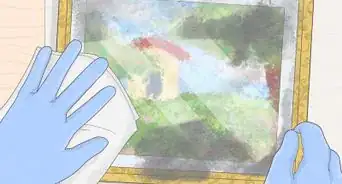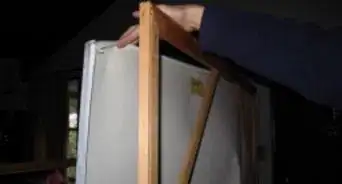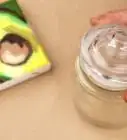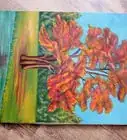This article was co-authored by Kelly Medford. Kelly Medford is an American painter based in Rome, Italy. She studied classical painting, drawing and printmaking both in the U.S. and in Italy. She works primarily en plein air on the streets of Rome, and also travels for private international collectors on commission. She founded Sketching Rome Tours in 2012 where she teaches sketchbook journaling to visitors of Rome. Kelly is a graduate of the Florence Academy of Art.
There are 13 references cited in this article, which can be found at the bottom of the page.
This article has been viewed 75,324 times.
Valuable oil paintings are only as valuable as the condition they’re in. It’s important that if you’ve inherited or acquired an expensive oil painting, that you take the proper steps in preserving it. While many of these steps are easy to do, it’s important to note that restoration or repair should be handled strictly by a professional.
Steps
Preserving Your Paintings
-
1Dust your painting twice a year. Use a natural-hair artist's brush or Japanese brush when dusting. Tilt your painting forward on a clean, padded, surface so that the dust rolls down. Once your painting is safely secured, dust it in a back and forth motion until you've cleaned the entire painting.
- Do not dust your painting if the paint is chipping or cracking.[1]
- Do not use conventional feather dusters or rough cloths to prevent scratches.
- Don’t use water, sprays, or cleaners that may interact with the varnish or paint.
- You can also use a soft microfiber cloth that's static-free if you don't have a brush.[2]
-
2Store your paintings in a dry room, wrapped in tissue paper. Moisture can destroy and warp a painting and its frame, so it’s important that you store paintings carefully. Use tissue paper, breathable sheets, or foam to protect your oil paintings while you store them. Avoid using material like bubble wrap because it can trap moisture in.[3]
- Make sure that the painting has air circulation.
- Store it in an area that is not prone to bugs, animals, or dust.
Advertisement -
3Hire a professional to clean and preserve your paintings. This is especially important if your painting is damaged, flaking, cracking, or peeling. Painting Conservators have years of experience and will be able to preserve and restore your painting without affecting its value. They can also give you additional tips on preservation while you store or display the painting at home.
- To find a licensed conservator, visit the website for the American Institute for Conservation of Historic and Artistic Works, or the AIC.[4]
-
4Re-varnish your painting. Before re-varnishing a painting, make sure you consult with a professional so they can advise you. Varnish protects the paint in your art by locking out dirt and dust.[5] It also evens out the appearance of oil paintings. Use a flat varnishing brush and apply the varnish from the top, working your way down the oil painting in a crisscross pattern. Use a flat surface to work on, and don’t apply the varnish vertically. Make sure to cover the entire painting, and let it dry in a warm, dust-free room.
- Virtually all oil paintings are varnished, and over time, need to be re-varnished.
Handling Your Paintings
-
1Handle one painting at a time. Each painting requires its own special attention to avoid damaging it in any way. Avoid stacking paintings on top of each other when moving or storing them, as this can easily damage them and reduce their value.[6]
- If a painting is too large for you to move yourself, have a friend help.
- Never lean your painting against a sharp object, or something that could scratch it.
-
2Hold the art by the frame when moving a painting. If you are transporting a painting, wash your hands and avoid touching the surface of the art.[7] Use both hands and lift the painting by the frame with your hands securely centered on each side of the frame.
- The natural oils in your hands can leave fingerprints and damage a painting's value.[8]
-
3Remove jewelry or other sharp accessories that could scratch the painting. Hanging jewelry or wearing other sharp stones could potentially scratch or poke the surface of your painting.[9]
- Poking the backside of a canvass can create a bulge that will create spider-web cracks along the surface of your art.[10]
-
4Fix improper framing and replace missing keys. A faulty frame could cause the painting to fall out of your hands and get damaged. Frame keys are small triangular wedges that regulate the dimensions of the stretcher frame and can fall out over time. Make sure to replace these by inserting new ones if they fall out.[11]
- You can buy framing keys at most art stores.
- You can have your art re-framed by a conservator, with brass mending plates and screws, for extra security and longevity.[12]
Displaying Your Paintings
-
1Keep your painting out of direct sunlight and heat. Do not hang your painting over a direct heat source like a radiator, hot water pipes, fire, or in direct sunlight, as this can destroy your painting.
- Exposing your paintings to heat could create cracking and blistering.
- Keep the temperature at 70-75 degrees Fahrenheit (21-24 degrees Celsius).[13]
-
2Keep humidity and moisture away. Avoid areas with high moisture or humidity like a damp basement, attic, bathroom, or kitchen.
- Damp areas could cause mold to grow on your art which will need to be removed by a professional.
- Keep the humidity level between 40% and 60%.[14]
- Purchasing a dehumidifier can help you regulate humidity in your house.
-
3Prevent extended exposure to ultraviolet light. UV lights are used to inspect paintings for restoration work, but should not be used over prolonged periods of time.[15] The reflection of the UV light on the surface of the painting can create cracking or lifting. When you're inspecting your expensive painting, make sure that when you're done, you turn off all the UV lights that were used to inspect it.
- Certain dyes and colorants used in oil paint will fade and dull over time, if exposed to UV lights.[16]
-
4Use painting hooks screwed into wood studs. Never screw your painting into the wall using drywall. Use a stud finder to find wooden studs, then use painting hooks to secure your painting to the wall. Make sure that it’s secure and doesn’t tilt or move to one side. The painting hooks will prevent the art from falling, which could damage your art and your wall.
- Make sure to use a tape measure and level when hanging art.
- Never drill directly into the frame unless you have frame screws.
- Do not use nails with your expensive art.
-
5Display your painting under plexiglass or glass. A glass or plexiglass encasement is an added precaution you can take when displaying valuable paintings. This will preserve them from dust, or any unwanted fingerprints that may occur in an open area.[17]
- Museum grade glass and certain plexiglass also come with UV filtering, to prevent the painting from being damaged from prolonged exposure to sunlight.[18]
- Regular glass is heavier and easier to break, but plexiglass is a polymer that may interact with your oil painting over a long period of time.
Expert Q&A
-
QuestionHow can I protect my oil painting?
 Kelly MedfordKelly Medford is an American painter based in Rome, Italy. She studied classical painting, drawing and printmaking both in the U.S. and in Italy. She works primarily en plein air on the streets of Rome, and also travels for private international collectors on commission. She founded Sketching Rome Tours in 2012 where she teaches sketchbook journaling to visitors of Rome. Kelly is a graduate of the Florence Academy of Art.
Kelly MedfordKelly Medford is an American painter based in Rome, Italy. She studied classical painting, drawing and printmaking both in the U.S. and in Italy. She works primarily en plein air on the streets of Rome, and also travels for private international collectors on commission. She founded Sketching Rome Tours in 2012 where she teaches sketchbook journaling to visitors of Rome. Kelly is a graduate of the Florence Academy of Art.
Professional Artist If your painting has dust on the surface, you can easily wipe it off with a soft microfiber cloth or brush.
If your painting has dust on the surface, you can easily wipe it off with a soft microfiber cloth or brush. -
QuestionCan an oil painting with urine spots be cleaned?
 Community AnswerIt's possible. Talk to an art restorer for advice.
Community AnswerIt's possible. Talk to an art restorer for advice. -
QuestionIf you have an old oil painting that needs to have the surface cleaned from dust and dirt, but you see that it is also cracking apart, what can be done to stop the paint from cracking and keep it safe from being ruined?
 Community AnswerIn this case it's important you refer to a professional. Call a local museum or find the closest art conservator. Trying to clean the surface of the painting once its been cracked will only devalue it.
Community AnswerIn this case it's important you refer to a professional. Call a local museum or find the closest art conservator. Trying to clean the surface of the painting once its been cracked will only devalue it.
References
- ↑ https://sites.google.com/a/gsbi.org/gvc1311/paintings
- ↑ Kelly Medford. Professional Artist. Expert Interview. 2 July 2019.
- ↑ https://www.sparefoot.com/self-storage/blog/1690-artwork-storage-tips-for-artists-collectors/
- ↑ http://www.conservation-us.org/membership/find-a-conservator#.V2l1zbgrJ9M
- ↑ Kelly Medford. Professional Artist. Expert Interview. 2 July 2019.
- ↑ http://www.si.edu/mci/english/learn_more/taking_care/care_painting.html
- ↑ http://timesofindia.indiatimes.com/life-style/home-garden/5-tips-to-care-for-expensive-oil-paintings/articleshow/17033221.cms
- ↑ http://blogs.scientificamerican.com/symbiartic/how-to-destroy-art/
- ↑ http://www.artpromotivate.com/2012/09/handling-care-storage-paintings.html
- ↑ http://valentinewalsh.co.uk/conservation/ageing/
- ↑ http://www.artpromotivate.com/2012/09/handling-care-storage-paintings.html
- ↑ http://www.conservation-us.org/about-conservation/caring-for-your-treasures/paintings#.V2luZ7grJ9M
- ↑ https://www.sparefoot.com/self-storage/blog/1690-artwork-storage-tips-for-artists-collectors/
- ↑ http://www.conservation-us.org/about-conservation/caring-for-your-treasures/paintings#.V2luZ7grJ9M
- ↑ http://www.webexhibits.org/pigments/intro/uv.html
- ↑ http://www.si.edu/mci/english/learn_more/taking_care/care_painting.html
- ↑ http://www.nytimes.com/1996/06/09/nyregion/home-clinic-protecting-paintings-from-damage.html
- ↑ https://www.apartmenttherapy.com/framing-artwork-glass-vs-plexi-155466




